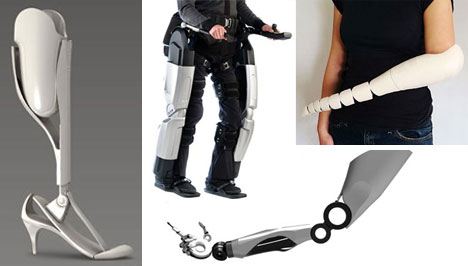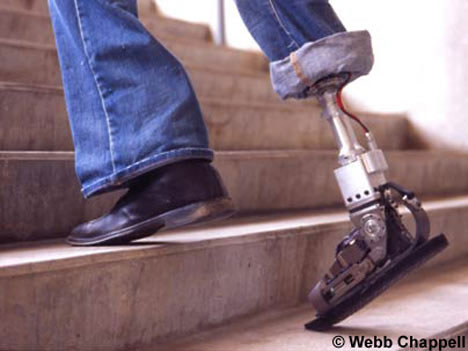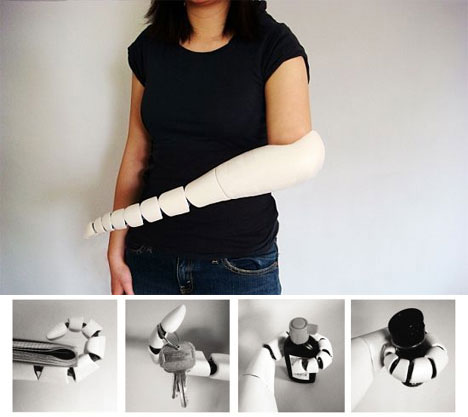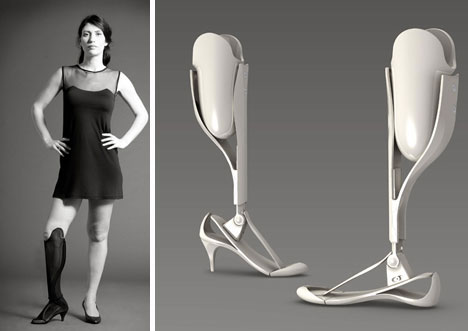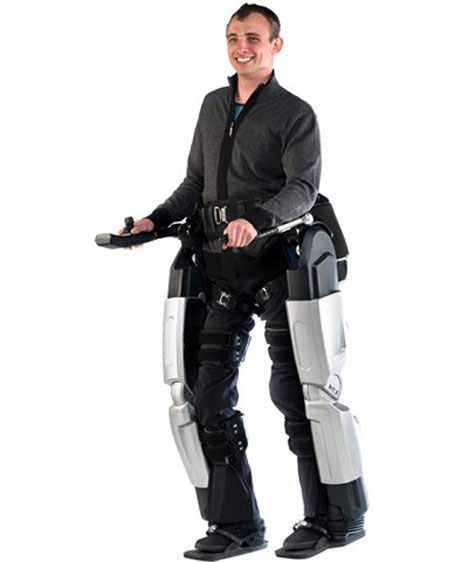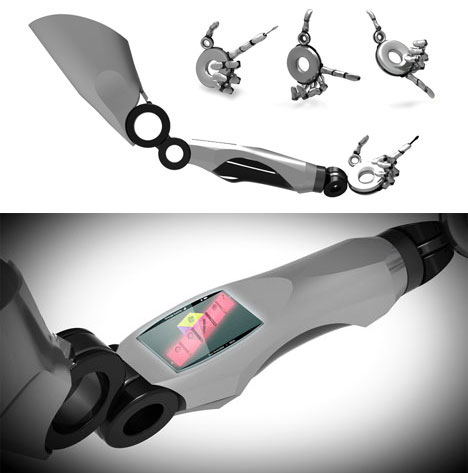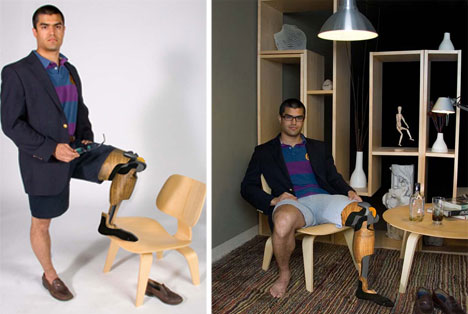Prosthetic limb technology has come a very long way since the days of peg legs and hook hands. With advances in cybernetic technology, prosthetic limbs are now able to be connected directly to the user’s nervous system so they can be moved by the mind just like natural limbs. These incredible prosthetic limb designs are at the forefront of cybernetic development – some are real, some are still concepts, but they are all amazing.
(image via: Daily Mail)
The world’s first robotic ankle was developed by a team at MIT especially for war veterans who have lost their legs in combat. The design is a huge improvement over previous legs which cause quick fatigue in users due to inefficient movements. The MIT ankle is flexible and propels wearers along with a small motor and a series of springs, cutting down on fatigue and giving wearers a much more natural gait.
(images via: Gajitz)
It is far from conventional, but this curling prosthetic arm concept designed by industrial design student Kaylene Kau is functional and definitely memorable. Rather than featuring flesh tones or a realistic-looking arm and hand, this prosthetic takes on a far more industrial appearance. Its articulating segments roll up to wrap around objects in order to manipulate them and move them around. While it would not be the best solution for those who like to maintain a low profile, it would be a very distinctive accessory for the adventurous and playful amputee.
(images via: Gajitz)
There aren’t many prosthetic devices aimed specifically at one gender or the other, but the Outfeet concept from Aviya Serfaty is a leg made just for women. It is adaptable in order to let the user change up its appearance significantly. Different “skins” can be stretched over the foundation to create a variety of fashionable looks to match whatever function and style the user chooses. A high heel attachment can even be added, letting the wearer dress up this decidedly feminine leg.
(image via: Rex Bionics)
The Robotic Exoskeleton (or Rex) was designed by a New Zealand company to get wheelchair users up and out of the chair and to allow them to walk around freely. The mechanism may look a little intimidating at first, but this amazing machine is about to revolutionize the way paraplegics get around. Rex is kept upright with gyro stabilization, making it exceptionally stable even when the user is in a crowded environment where people are brushing up against the user. And because no crutches are required with Rex, users can use their hands for other activities while standing tall in their new robotic legs.
(images via: Gajitz)
While many prosthesis designers are trying to make their products look more natural and life-like, some are going in the opposite direction and embracing the industrial aesthetic. Such is the case with this arm from Creative DNA Australia, which is all bare metal and futuristic-looking joints. Best of all, it’s got more tools than a Swiss Army knife: a screwdriver, bottle opener, phone, camera and a touch screen are all included in this outrageously different prosthetic arm design.
(images via: Joanna Hawley)
This may be the most overtly stylish prosthesis ever created. It was modeled by designer Joanna Hawley after the iconic furniture and architectural designs of Charles and Ray Eames. Its clean lines, sophisticated appearance and inherent grace reflect a far greater level of humanity and personality than most other prosthetic limbs. The designer wanted to create a prosthetic limb that would give wearers a sense of pride in their appearance rather than embarrassment at wearing an ugly prosthesis.
